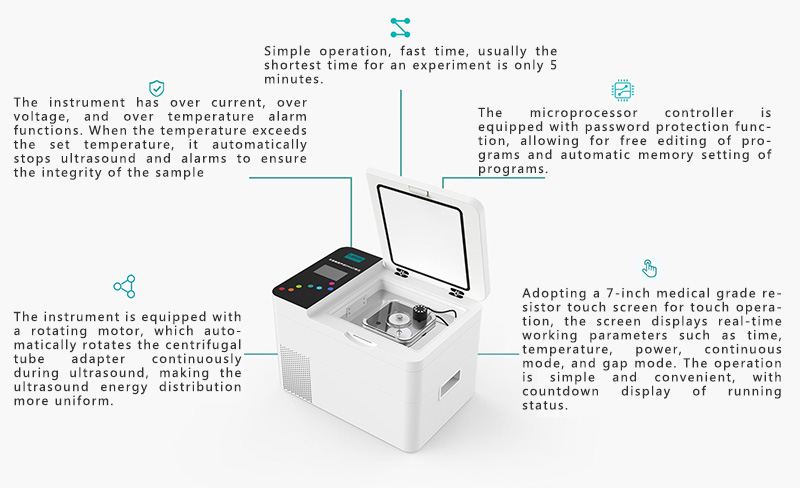|
Product Features |
|
⒈ No aerosol float produced - enhanced biological safety (e.g. branch bacteria, viruses, etc.) |
|
⒉ Eliminates the risk of sample cross-contamination |
|
⒊ Eliminates the traditional problem of probe wear and debris |
|
⒋ Can process a wide range of samples with a broad sample processing range |
|
⒌ Suitable for various standard containers |
|
⒍ Can be used for processing trace samples, as small as 5ul |
|
⒎ The automatic continuous rotation of the centrifuge tube makes the energy distribution of the ultrasonic wave more uniform |
|
⒏ Optional high and low temperature constant temperature water bath, customized rotating base for Eppendorf tubes of various diameters according to customer needs |
|
Advantages |
 |
|
【1】High throughput, up to 60 samples can be processed simultaneously, with high experimental efficiency. |
|
【2】No frequent operation of the probe is required, and each sample is in a separate fully enclosed test tube to avoid cross-contamination. |
|
【3】The product is equipped with a variety of adapters ranging from 0.1ml to 15ml, suitable for different types of samples. |
|
【4】The ultrasonic parameters can be flexibly set, and the experimental steps are standardized, with good experimental reproducibility and high result reliability. |
|
【5】No special consumables are required, resulting in low experimental costs. |
|
【6】The use of ultrasonic waves in a 4°C low-temperature water bath allows for even energy distribution and complete ultrasonic effects, with samples processed fully in a low-temperature environment to prevent denaturation. |